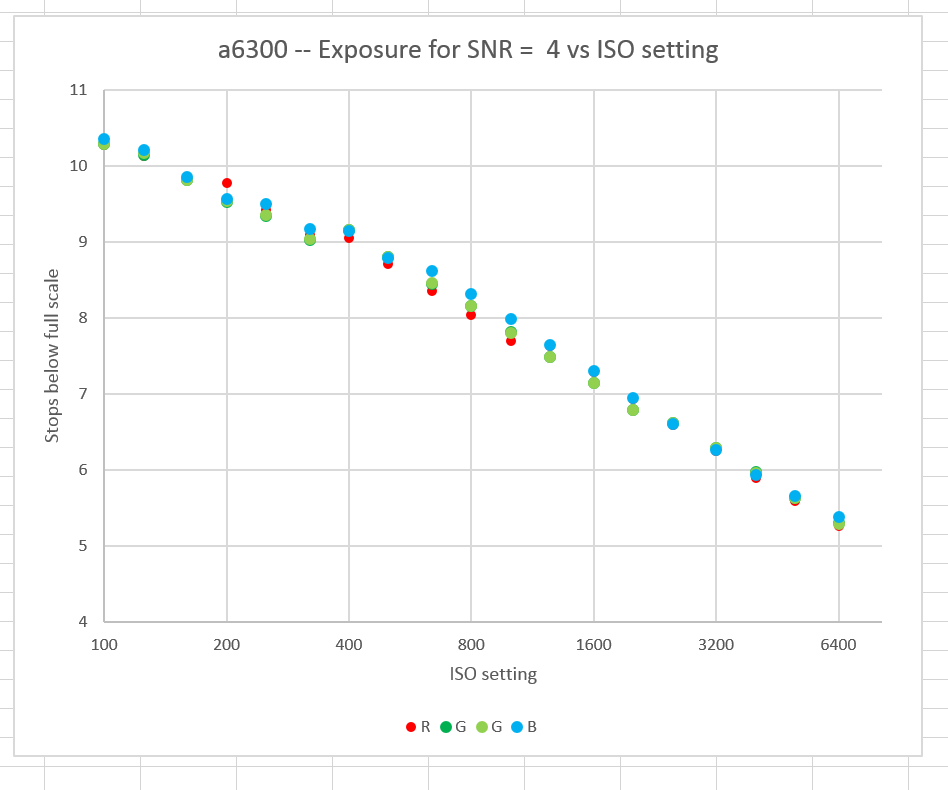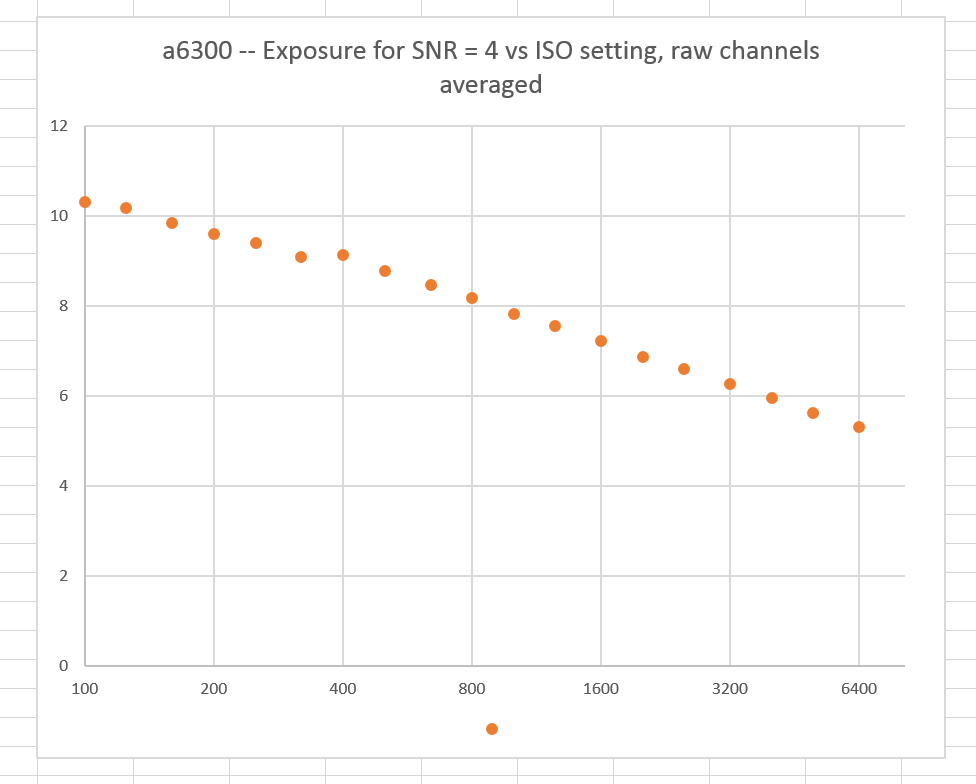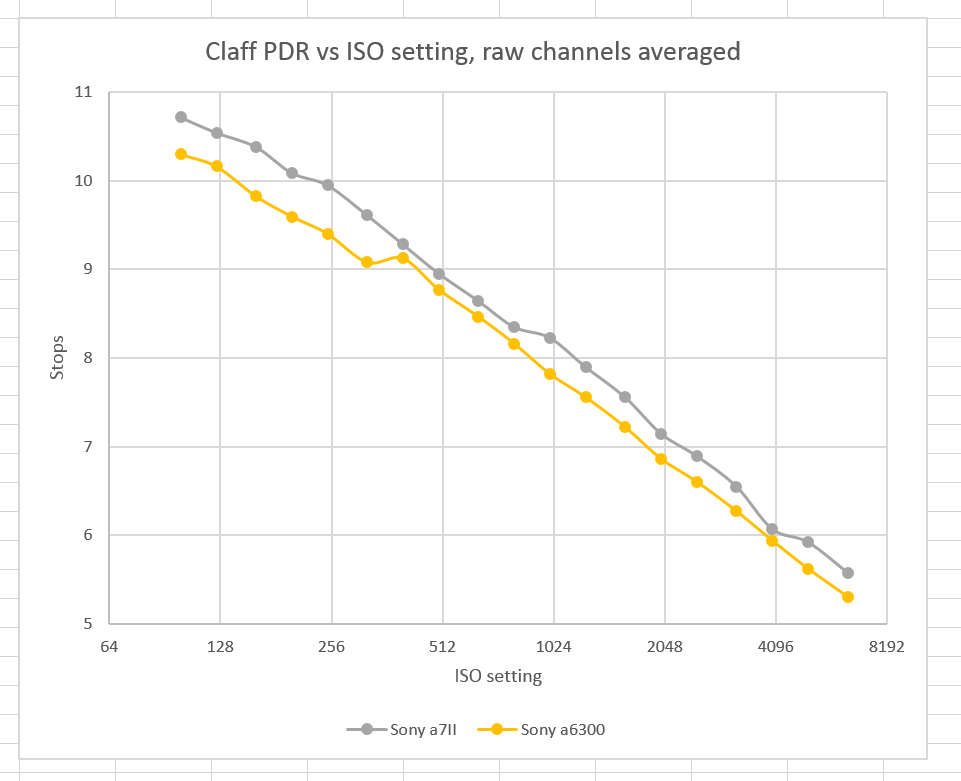This is part of a long series of posts about the Sony a6300. The series starts here.
My modeling program also allows the calculation of a dynamic range measure that more closely describes the useful dynamic range of a camera used for general purpose (as opposed to scientific or technical) photography than the engineering dynamic range (EDR) curves that I presented earlier. The more appropriate measure is called Photographic Dynamic Range (PDR). Like EDR, PDR is the full scale divided by a number. For EDR, that number is the noise floor. For PDR, the number is the signal level that produces a barely acceptable signal to noise ratio (SNR) in a photographic image. PDR’s therefore tend to be lower than EDRs without resolution correction.
The variant of PDR that I use I call the Claff PDR, after its inventor, Bill Claff (Bill is far to modest to name it that, but he deserves the credit). Bill’s definition of the SNR that forms the denominator provides a level playing field for cameras of different resolutions and is 16000 over the camera image height in pixels. That sounds arbitrary, but it’s not.
Well, it’s a little arbitrary. Let’s get that part out of the way first. It assumes an image aspect ratio of 3:2. That’s the case with all the cameras that I remember Bill analyzing on his site, but not for all the cameras that I own, so I’m going to modify the SNR floor to 28844 over the image diagonal in pixels. That will give the same number for images with 2:3 aspect ratios. It’s way more significant digits than we need for this calculation, but, what the heck, computers are going to do all the work anyway, and they don’t care.
What setting the SNR floor for a raw image to 28884 over the image diagonal in pixels does is produce an SNR of 20 for images ideally resized to 8×10 inches and viewed at arms length. You may print larger and you may view the image from a different distance. In that case, you’ll want to adjust the floor SNR accordingly.
Enough background. When I search for samples with a SNR of 4, which is the Claff SNR for each raw channel for images from a 4000×6000 pixel camera, in single shot mode with the a6300, I get:
You’ll notice that the numbers are lower than the a6300’s EDR as shown in the previous post by about two and a half stops.
If we average all four raw channels, we get:
Comparing the a6300 with the a7II:
We see that the cropped-sensor camera comes very close to its full frame cousin at ISO 400 and above.



hi – you mention a7rii in the description but a7 ii in the graph. guess its the a7 ii you are comparing to?
Yes, sorry. I’ll fix it.
In the last graph, what is the difference at 100 ISO? It looks to me like it’s about 1/3 of a stop. Is this correct? If so, is it safe to say that pushing files taken in single shot mode at base ISO will result in a negligible difference, whether shooting with an A6300 or A7 II?
A third of a stop on the vertical axis, but more than a full stop if you look at the horizontal one.
I wouldn’t say that, unless you feel that ISO 100 and ISO 200 for the a6300 have about the same noise.
Thank you for your quick response, Jim. When would the vertical axis be more relevant than the horizontal axis?